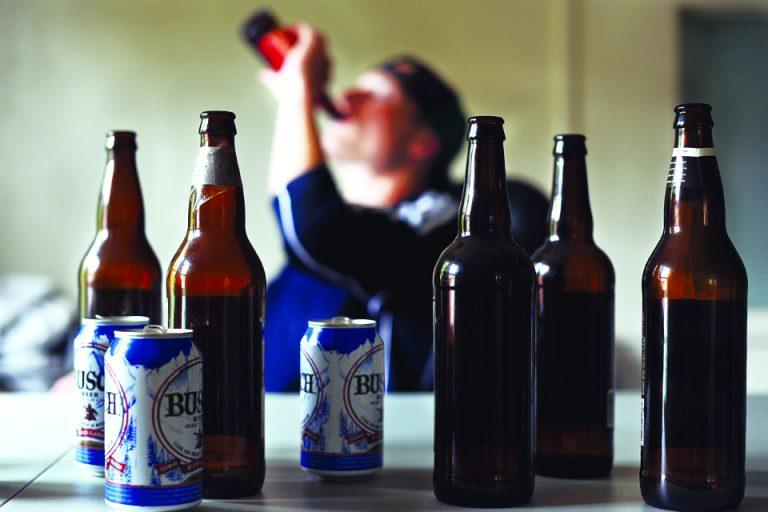Myths and Facts About Drugs and Alcohol

IT’S IMPORTANT TO SEPARATE MYTH FROM FACT WHEN TALKING TO YOUR CHILDREN ABOUT DRUGS AND ALCOHOL.
WE HOPE THIS HELPS.
Myth
Alcohol isn’t as harmful or as dangerous as other drugs.
Fact
Underage drinking leads to more deaths of young people than all other illegal drugs combined. Alcohol increases your risk for many diseases, such as cancer. Drinking too much alcohol too quickly can lead to alcohol poisoning which can kill you.
Myth
Drinking is a good way to loosen up at parties.
Fact
Drinking is a dumb way to loosen up at parties. Alcohol can make you act silly, say things you shouldn’t say, and do things you would not normally do.
Myth
Drinking will make me cool.
Fact
There’s nothing cool about stumbling around, passing out, or throwing up. Drinking alcohol impairs your judgment, leads to risky behavior, and poor decision making.
Myth
All the other kids drink alcohol. I need to drink to fit in.
Fact
If you really want to fit in, stay sober. Most young people don’t drink alcohol. Research shows that more than 70% of youth aged 12 to 20 haven’t had a drink in the past month.
Myth
I can sober up quickly by taking a cold shower or drinking coffee.
Fact
On average, it takes 2 to 3 hours for a single alcoholic drink to leave the body. Nothing can speed up the process.
Myth
Adults drink, so teens should be able to drink too.
Fact
Young people who begin drinking by age 15 are four times more likely to abuse alcohol or become dependent on alcohol than those who begin drinking after age 20. An adolescent’s brain and body are still growing. Drinking alcohol can cause learning problems and can lead to adult alcoholism.
Myth
Beer and wine are safer than liquor.
Fact
Alcohol is alcohol. One 12-ounce bottle of beer or a 5-ounce glass of wine has as much alcohol as a 1.5-ounce shot of liquor. Alcopops – sweet drinks laced with malt liquor – often contain more alcohol than beer.
Myth
I can drink alcohol and not have any problems.
Fact
If you are under 21, drinking alcohol is a big problem. It’s illegal. If caught, you may have to pay a fine, perform community service, and attend alcohol awareness classes. Kids who drink are also more likely to get poor grades in school and are at higher risk for being a crime victim.
Myth
Since teens are going to drink no matter what we say, we might as well have them drink at our homes where we can keep an eye on them and take away the car keys.
Fact
This is a dangerous myth. Taking care of the external environment does not make the internal environment safe for a vulnerable adolescent. Teens may be on medications, may come from a family with a history of alcoholism, or other behaviors that don’t involve driving that could cause an alcohol related injury or death. Keeping an eye on a bunch of drunk teens is a daunting task. It’s also against the law. Serving alcohol or other substances to teens, even in your own home, opens you up to profound liability issues.
Myth
Teens need practice drinking in high school so they learn their limits early and don’t go wild in college.
Fact
There is no evidence to support this theory. Heavy drinking in high school increases limits (tolerances) in a dangerous way and can prevent teens from developing the very skills necessary for an emotionally healthy adult life. Young people who are “prepared” for college life have mastered the crucial tasks of adolescence – they are able to deal with disappointment, boredom, joy, etc. They can regulate their moods and manage their feelings without alcohol or drugs. This is how they gain the maturity to drink alcohol safely. Studies have shown that most students who have drinking problems in college, brought a drinking problem with them from high school. Experts agree that binge drinking doesn’t typically begin on college campuses, it’s simply continued in a more reckless way when teens get to college.
Myth
In Europe, where there are no age restrictions on alcohol use and consumption is common, there is less of a problem with teen drinking and binging.
Fact
In 2006, the European Union, concerned about teen drinking, commissioned a study on alcohol use among young people. They found that the levels of alcohol use and binge drinking in Europe was significantly higher than in the US, in every country except Turkey, which is primarily Muslim (and alcohol use is forbidden). Recent articles in international journals have underscored problems in England, Russia, and other countries as youth put themselves and others at risk due to the overuse of alcohol.
Myth
Aren’t beer and wine “safer” than hard alcohol?
Fact
No. One 12-ounce bottle of beer or a 5-ounce glass of wine has as much alcohol as a 1.5-ounce shot of liquor. Any kind of alcohol can make you drunk and cause problems.
Myth
How can I say no to alcohol? I’m afraid I won’t fit in.
Fact
It’s easier to refuse than you think. Try “No thanks”, “I don’t drink”, or “I’m not interested.” Remember, the majority of teens don’t drink alcohol. You’re in good company when you’re one of them. (Visit our Ways to Say No page for more tips on how to say “no”.)
